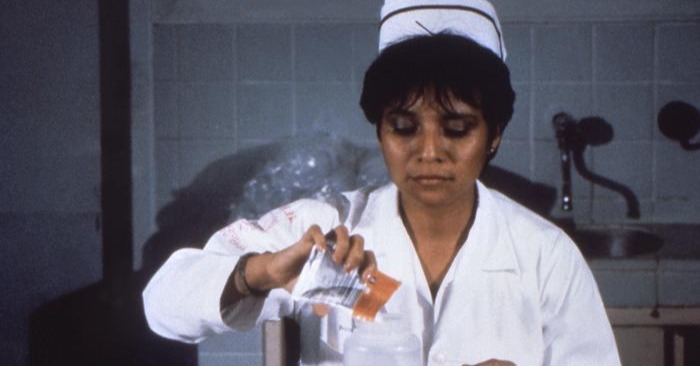
What Does a Family Nurse Practitioner Do?
Family nurse practitioners perform most of the same tasks as [...]

According to the National Association of Pediatric Nurse Practitioners (NAPNAP), the US is on the verge of a pediatric nurse practitioner (PNP) shortage. The organization reports that the workforce currently stands at approximately 18,000 pediatric nurse practitioners, with just over 1,000 new PNPs earning licenses each year. Add approximately 50,0000 pediatric primary care physicians and you have one side of the equation; on the other, you have 74 million children, with that number increasing to 76.3 million by 2030. We’ll leave the math to you, but we defer to NAPNAP’s president for the takeaway: the US has “critical shortages looming in both PNP clinicians and faculty segments.”
Growing opportunity is hardly the only appealing prospect of becoming a pediatric nurse practitioner. You’ll also earn a healthy income: over $100,000 annually, by most accounts. As a nurse practitioner, you will enjoy broad privileges and responsibilities that, in many states, put you on near-equal footing with medical doctors. Finally, you will spend your days treating humanity’s most adorable representatives: children.
If you choose this route, the road ahead won’t be easy. It includes graduate study, certification, and continuing education throughout your career. This article explains how to become a pediatric nurse practitioner. In it, we discuss:
Pediatric nurse practitioners provide advanced practice nursing to infants, toddlers, young children, and adolescents. They work in a variety of settings, including:
As advanced practice registered nurses, PNPs are qualified to perform a broad range of medical tasks, including:
As the shortage of medical doctors in the US grows more acute, medical practices are transferring more primary care responsibilities to nurse practitioners and physicians’ assistants. In 22 states, nurse practitioners are granted full practice authority, allowing them not only to evaluate patients but also to prescribe medications without further approval from a medical doctor. Limits on NPs’ authority vary in the remaining states but may include restrictions on their capacity to:
The National Association of Pediatric Nurse Practitioners (NAPNAP) distinguishes between two fields of PNP practice: primary care and acute care. The Pediatric Nursing Certification Board (PNCB) offers distinct certifications in each of these areas.
According to the American Association of Nurse Practitioners (AANP), pediatric nurse practitioners in primary care earn a salary of $106,301. Those who work in acute care earn a base salary of $96,494.
Job-posting websites offer similar data. Indeed reports an average annual salary for pediatric nurse practitioners of $111,174. Glassdoor fixes pediatric nurse practitioner annual income at $110,076, with opportunities for an additional $25,000 in incentive pay. Payscale estimates a slightly lower salary of $89,092 with opportunities to earn another $7,000 in incentives. Salary.com estimates a median annual income for pediatric nurse practitioners of $106,100.
The Bureau of Labor Statistics reports that the median annual income for nurse practitioners is $107,030. The agency does not break out NP incomes by areas of specialization. It does, however, report that the best-paying employers include outpatient care centers ($116,550), specialty hospitals ($114,880), and general medical and surgical hospitals ($113,900). According to the AANP, approximately seven percent of NPs specialize in pediatric care.
Becoming a nurse practitioner is a multi-step process. First, you must become a registered nurse (RN). The minimum academic qualification for an RN license is an Associate of Science in Nursing (ASN) or Associate Degree in Nursing (ADN), a two-year degree that you can earn at your local community college. If you want to become a pediatric nurse practitioner, however, you should seriously consider pursuing a Bachelor of Science in Nursing, for several reasons:
If you already have an ASN or ADN, you can upgrade your degree through an RN to BSN program. If you’re really ambitious, you can enroll in a RN to MSN program and knock off both the BSN and MSN in one pass. RN to BSN programs take one to two years to complete full-time; RN to MSN programs take two to three years for full-time students.
You must also pass the NCLEX-RN examination to earn your RN license. Because RN licenses are regulated at the state level, some states may impose additional requirements (e.g., passing a background check). You can find specific information at your local state board of nursing website.
After earning your license, you may choose to work for a few years before returning to school for your master’s degree. Many nurses who ultimately become nurse practitioners do just that, benefitting from the hands-on experience of working in a doctor’s office, hospital, surgery center, clinic, or long-term care facility. Some, however, proceed directly to master’s-level study. There is no single “right” pathway to a career as a pediatric nurse practitioner.
Ultimately you will need to earn your MSN (or a Doctor of Nursing Practice (DPN) degree) to become a nurse practitioner. Look for programs accredited by the American Association of Colleges of Nursing (AACN) or the Commission on Collegiate Nursing Education (CCNE). MSN programs vary considerably. Even so, most require a core curriculum that includes courses like:
You should look for a school that offers a pediatric nurse practitioner track. Universities offering this option include:
A pediatric nurse practitioner curriculum typically includes such courses as:
Most importantly, a program with a pediatric nurse practitioner specialization will require a clinical practicum. The practicum, which typically involves about 600 hours of clinical training, is where you put all your learning into practice. It is an essential part of any nurse practitioner education.
According to the National Association of Pediatric Nurse Practitioners (NAPNAP), more than 95 percent of certified PNPs hold a certification from the Pediatric Nursing Certification Board (PNCB). PNCB offers three relevant certifications:
These certifications are conferred through multiple-choice examination (150 questions for the PMHS, 175 questions for the CPNP exams). To sit for these exams, you must meet minimum qualifications for hours of clinical practice (500 hours for CPNP, 2,000 hours for PMHS), academic degrees, and continuing education.
A relatively small number of PNPs earn certification through the American Nurses Credentialing Center (ANCC). Its Pediatric Nursing Certification (RN-BC) is also exam-based (three hours, 150 questions). It’s open to RNs who have the equivalent of two years of full-time experience or 2,000 hours of clinical experience in pediatric nursing over the previous three years. ANCC certification covers primary care only; if you are interested in pursuing acute care, you should get your certification from NAPNAP.
Either organization’s certification confers expertise and dedication. It’s worth noting, however, that only the CPNP certifications are endorsed by NAPNAP.
The Internet offers a variety of sources for remaining up-to-date with both the profession of pediatric nurse practitioner and the field of pediatrics as a whole. They include the following:
To become a pediatric nurse practitioner, you must first become a registered nurse. Once you’re an RN, you should know fairly quickly whether the responsibilities and compensation of that job satisfy you. If they do, then you probably shouldn’t become a pediatric nurse practitioner. Getting there is a lot of work, and the workload doesn’t slacken once you become a PNP.
If, however, you find that you crave more responsibility and more money, then you should seriously consider becoming a PNP. You’ll unquestionably get both. Your job will likely be more stressful, but that’s an unavoidable cost of greater responsibility. The flipside is that you’ll also have a more significant impact on patient outcomes, which can be highly gratifying.
A final note: it is possible to earn a Master of Science in Nursing online and part-time, meaning it’s more convenient than ever to complete the one crucial step required to become a nurse practitioner. If the hassle of returning to campus is a major impediment to your pursuing this career, consider earning your MSN from one of the many prestigious universities offering the degree online.
(Last Updated on February 26, 2024)
Questions or feedback? Email editor@noodle.com

Family nurse practitioners perform most of the same tasks as [...]

Education requirements for nurses in the U.S. are becoming more [...]

Nurse practitioners (NPs) typically earn six figures, but NP salaries [...]

Becoming a nurse practitioner can be arduous. The journey requires [...]

A Doctor of Nursing Practice (DNP) degree qualifies you for [...]
Categorized as: Advanced Practice Nursing, Nurse Practitioner, Nursing & Healthcare